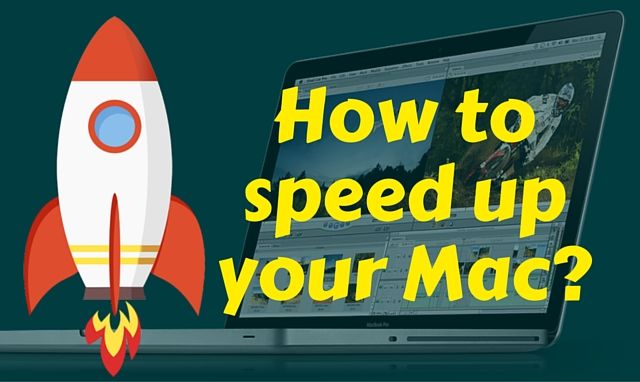How to speed up your Mac?

Remember how very impressed you were with the super runtime speed of your brand new mac? How it seemed to be able to open applications so quickly and multitask with ease?
However with time and constant wear and tear that super-fast Mac of yours isn’t as fast anymore and seems to be like any other ordinary computer.
Multitasking is tedious and you are tired of the slow reaction time of your once prized possession; well you don’t need to worry on “how to speed up my Mac” and make it perform as if it were a brand new one with the use of the following tweaks and tips.
Make Good use of the Activity Monitor
Under the utilities folder of your Mac you can find yourself a very useful tool provided by Apple which will help you understand exactly what is running on your Mac, the name of the tool being the Activity Monitor.
This small yet very effective tool helps you to understand the exact processes which are running on your Mac and also allows you to stop a particular application to speed up Mac.
The Activity Monitor not only lets you understand the various applications which are running in your Mac but also lets you view various other functions and processes which are slowing down your machine.
The activity monitor has several tabs which provide information on various system essentials such as the CPU usage tab, the virtual memory tab and the RAM tab.
Whenever there is an increase in the activity of either of the columns it signifies that the process responsible for the hike could be a possible cause for your Mac to slow down could be hampering your system.
You could close the process then and there using the Activity Monitor or could fix the process to reduce the amount of load it is levying on the system.
Cleaning your desktop and Hard drive
The desktop is a very important factor in deciding the speed of Mac while booting up as it is the first screen which your Mac has to load.
Apart from that any application you open on your desktop depends on how much load the desktop is putting on the system and the speed of the system.
So to improve the speed of Mac and help your mac run faster it is advised that you clear up your desktop to have the least amount of icons or files, you could either delete the shortcuts or could put them in folders.
This ensures that the operating system of your Mac isn’t under too much pressure to load up your desktop thus ensuring faster runtime responses.
Similar to your desktop the hard disk drive of your Mac is a crucial factor in deciding the speed of the same. Your
Mac operating system uses up whatever free space is available in your hard disk drive in order to speed up your system, this free memory is known as virtual memory.
Thus the more space you use up on your mac hard disk drive lesser will be the amount of virtual memory available for your Mac to speed up your system.
So an easy solution on how to speed up a mac is to free up your hard disk drive and free up the system’s virtual memory.
Get a hardware and software upgrade
If your edition of Mac is quite old it could be a genuine reason why your system is slowing down. An old hardware slows down the operating system and also takes time to interpret various commands and actions.
Even if your hardware is not old, consider increasing the amount of RAM your system has or replacing the processor your Mac is using with a better and more powerful processor.
All of this will make sure that your computer starts running faster and performs better and in a much smoother fashion than before.
Similar to your hardware, the software running on your system must also be upgraded to make sure your system runs in the best state possible.
Timely software upgrades and operating system upgrades are provide by Apple itself which has resolve several Mac issues and speeds up your machine.
You can set your apps and your update preferences to download updates automatically and this remove your worries about upgrading your system as timely upgrades will be automatically made to your software to ensure that they are in the best running condition possible.
Manage start up items, visual effects and other such minor stuff
If the above methods failed to produce a result and your Mac is still slow and sluggish then consider making small tweaks to your system such as reducing the amount of startup items which your Mac has.
Several programs automatically get added to your computer’s start up list on being installed and this slows down your machine as it takes a lot longer to boot because it has to load more programs.
You can manage your startup items by going to ‘System Preferences’ and then to ‘login items’ under ‘users and groups’.
Almost all Mac machines can run most visual effects very smoothly, however of your system is slowing down then consider turning off these visual effects as they take up quite a bit of your system’s RAM and your processor power.
Visual effects like the Mac OS X Mavericks are examples of such visual effects which you can turn off to ensure your machine runs smoothly.
If none of the Apple provided applications did the trick you can always try third part system boosters to boost up your computer.
Examples of such software include OnyX and CleanMyMac 3. These applications will help you to considerably boost your system speed and response time giving you a smooth computing experience.
If you follow all the above methods to speed up Mac you could be very sure that your computer will receive a speed boost and will perform like your swanky new Mac of the old.
So start applying these measures to have a super smooth Mac experience.

